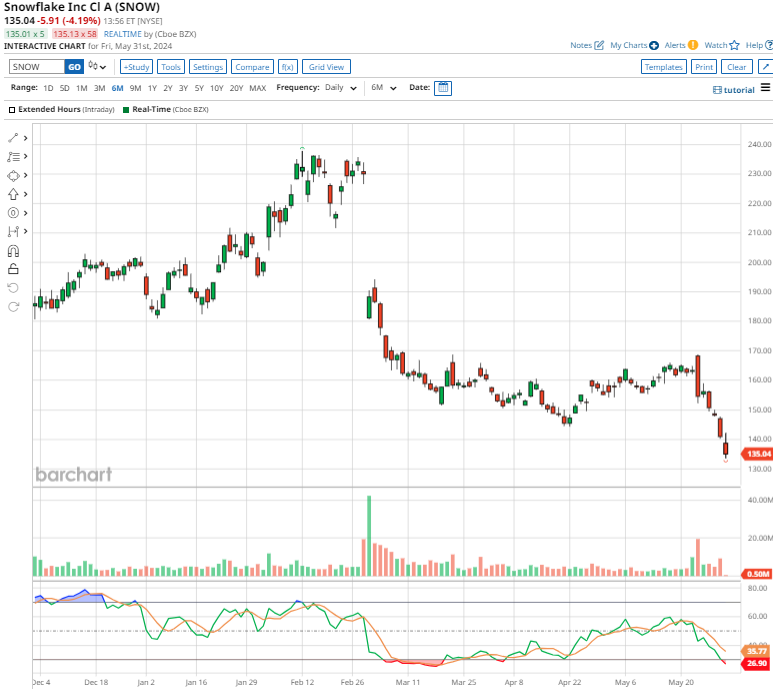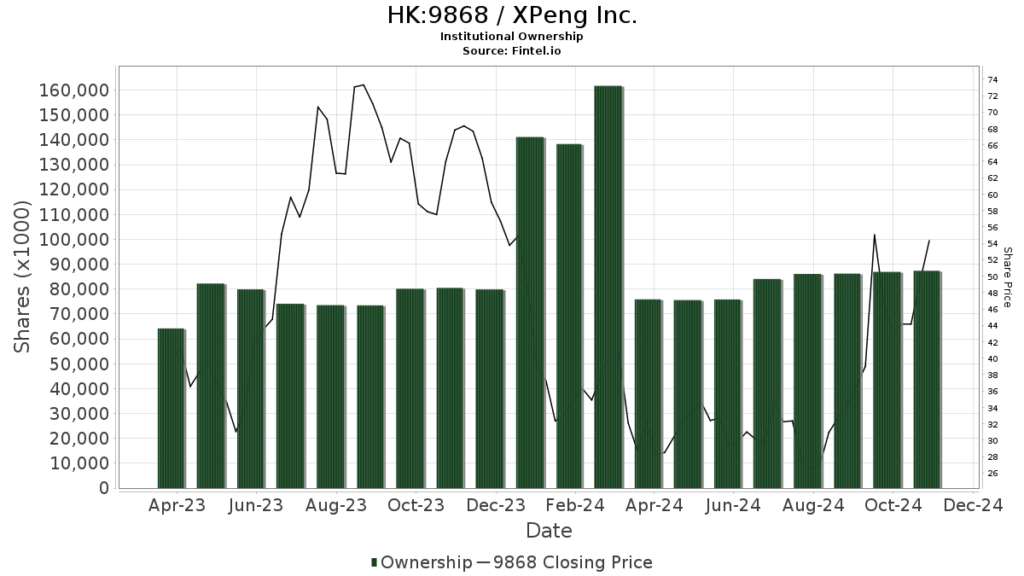The realm of cloud data is akin to a battleground where the innovative prowess of artificial intelligence serves as a formidable sword cutting through massive datasets. Among the vanguards leading this charge is Snowflake Inc. (SNOW), a company that stands distinguished in the domain of cloud data warehousing by harnessing the power of AI.
Yet, like a ship navigating turbulent waters, Snowflake faced its share of challenges this year. A sequence of events including a CEO shuffle in February, lackluster guidance, and a fiscal Q1 earnings miss rattled SNOW stock, causing it to plummet by a staggering 43% from its peak of $237.72 on Feb. 12. Despite this setback, the spirits of market observers remain undampened, brimming with optimism about the prospects that lie ahead.
Exploring Snowflake’s Canvas
Hailing from Montana, Snowflake Inc. (SNOW) is a prominent player in the global cloud-based data platform arena. Valued at a market cap of $47.1 billion, its Data Cloud acts as a repository for data, enabling organizations to derive profound business insights, drive AI applications, and facilitate data sharing. Renowned for its expansive language model “Arctic,” Snowflake’s technology bolsters AI solutions, enhancing efficiency in coding and development.
The company’s strategic collaborations with Fiserv (FI) and an extensive partner network, including names like EY and Deloitte, underscore its pivotal role in ensuring secure access to financial data and expanding data capabilities. Embracing unstructured data—a realm now tapped by 40% of its customers, with over 1,000 new users onboarded in just six months—Snowflake’s Iceberg feature is progressively enlarging its data footprint, enticing over 300 customers through public previews.
However, despite the commendable efforts, Snowflake’s stock has seen a 32% dip year-to-date, significantly lagging behind the broader S&P 500 Index, which has recorded a 9.1% gain over the same period.

From a valuation standpoint, Snowflake stock currently trades at 17.65 times sales, lower than its five-year average of 43.33x, yet still outranking some of its industry peers.
Snowflake’s Performance in Q1
Significant turbulence ensued for Snowflake post its fiscal Q1 earnings disclosure on May 22. The company’s revenue of $828.7 million, up by 33% year over year, managed to outshine revenue projections by 5.5%. Notably, product revenue, acting as the primary revenue driver for Snowflake, depicted a 34% annual surge to $789.6 million, surpassing the projected range of $745 million to $750 million. Nevertheless, adjusted earnings dipped from $0.15 to $0.14, falling short of Wall Street’s estimates by approximately 19.8%.
A highlight in the otherwise tumultuous landscape is Snowflake’s impressive roster of 485 customers generating trailing 12-month product revenue exceeding $1 million, marking a robust 30% year-over-year increase. The count of Forbes Global 2000 clients also rose by 8%, hitting 709 as of the latest data as of April 30. Noteworthy is the strong net revenue retention rate of 128%.
Peering into the future, Snowflake anticipates a fiscal 2025 product revenue of $3.3 billion—a slight uptick from its prior outlook of $3.25 billion—signifying a 24% annual growth trajectory. The company, however, trimmed its adjusted product gross profit margin to 75% from 76%, citing escalated investments in AI. Additionally, the adjusted operating margin was revised downward to 3% from 6%, while the adjusted free cash flow margin saw a reduction from 29% to 26%.
Market analysts prognosticate a 2.7% narrowing in Snowflake’s GAAP loss per share to $1.83 in fiscal 2025, with losses expanding by 7.7% to $1.97 per share in fiscal 2026.
Storm Clouds Over Snowflake in Late February
Snowflake’s shares encountered a rough terrain in late February, buffeted by multiple headwinds. While its top-line growth held steady, a drop in retention rates sowed seeds of doubt among investors. Snowflake’s fee structure, revolving around usage-based fees as opposed to recurring subscriptions, left it vulnerable to economic fluctuations and shrinking software budgets. Compounding the pressure, fierce competition from cloud behemoths like Amazon (AMZN) Web Services (AWS), Microsoft (MSFT) Azure, and Google (GOOGL) Cloud added to the company’s woes.
Further denting investor confidence was Snowflake’s lackluster first-quarter guidance post its earnings beat on Feb. 28. An inevitable consequence of this guidance was investor jitters, magnified by the retirement announcement of CEO Frank Slootman and the subsequent appointment of Sridhar Ramaswamy, Google’s former ad chief. Despite Slootman retaining his position as board chairman, uncertainties loomed large.
Mosaic of Analyst Expectations for Snowflake Stock
Analysts remain buoyant about Snowflake post its latest earnings unveiling. On May 23, RBC Capital Markets analyst Matthew Hedberg reiterated an “Outperform” rating, along with an upward revision of the price target to $226 on the back of Snowflake’s robust Q1 product revenue performance. Similarly, analysts such as Mark Murphy from JPMorgan (JPM), Eric Heath from KeyBanc (KEY), and Blair Abernethy from Rosenblatt revised their respective price targets for Snowflake, maintaining “Buy” equivalent ratings.
Conversely, Needham trimmed Snowflake’s price target to $210 from $240, maintaining a “Buy” rating. The analysts considered investor concerns over Snowflake’s adjusted operating and free cash flow margin guidance as shortsighted, emphasizing Snowflake’s future-proofing strategies in a swiftly evolving market landscape, with a slew of new product launches slated later this year.
Similarly, Stifel and Loop Capital also reduced their price targets while reiterating bullish ratings for Snowflake stock.
Snowflake currently holds a consensus “Moderate Buy” rating. Among the 41 analysts tracking the stock, 26 advocate a “Strong Buy,” three recommend a “Moderate Buy,” 10 suggest a “Hold,” and the remaining two issue a “Strong Sell” rating.

The average price target of $202.73 points towards an upside potential of 50.4% from current price levels. Notably, the highest target price for Snowflake stands at $240, indicating a prospective rally of up to 78%.




